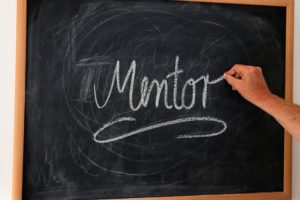 THE ACCIDENTAL MENTOR
THE ACCIDENTAL MENTOR
This story begins about 8, or perhaps a few more years ago. I had an adult client. She has a daughter I have met who is graduating from high school. What next? College? Some “gap year”?
Around this time, I received an email about a new training directed by the person who had been my educational director. If I could imagine what my ED would have been like as an 18 or 19-year-old, she would have been very much like this young woman. I also knew that the two shared a strong common interest. I casually forwarded that email to this young woman. She applied to the training. I wrote her a recommendation. She was accepted -and so I became her mentor.
Through the 4 years of training we met periodically -always in person when she was in town between training segments and a quite flexible university program. What I do recall is that she is a natural kinesthetic and experiential learner -in many ways ideal for a trainee. It has been a while, and don’t remember all we did. I recall helping her plan and prepare for her ATM® practicum as well as lots of FI® related practice and general conversation.
Toward the end of her training I recall sensing a need, and helping this young woman organize her thinking in a way that would enable her to help others organize their movement. An example would be breaking down a challenging or painful movement and identifying what optimally would be happening in various parts. For example, someone with difficulty reaching might need to learn, among other things, to engage the scapula and ribs more effectively.
I recall celebrating the end of her training teaching an ATM® together alternating instructions, and doing short complimentary Functional Integration® lessons to celebrate Feldenkrais week.
About 5 or 6 years ago I met Dawne. We were in Santa Fe for an ATM® intensive about neurodevelopmental movement. We learned that we shared an interest in how movement issues might relate to learning challenges in areas such as writing and reading, her specialty. We stayed in contact and ultimately Dawne decided to do a training – not surprisingly, I became her mentor.
While the mentee I first talked about had a home base in my town, Dawne lives far away. Though we have actually worked together in person a few times, technology has been our tool through the process, preparing us well for when COVID hit in her 4th year of training. Early in the training we mostly emailed with an occasional Skype chat. Back in the day, when travel was possible, we were able to be together three times working quite intensively. When I visited, I had the chance to give lessons to the children she worked with and speak to how she might progressively integrate Feldenkrais® into the work she was doing.
COVID clearly changed life as it had been. For me it meant more available time. Dawne no longer had in person training sessions at a time when learning to give a well organized FI lesson was an intention. We fell into a pattern of weekly Zoom sessions. Many weeks Dawne has given an FI lesson to her husband or daughter. I have been amazed at how much I can see on Zoom. I have been able to supply some guidance, and/or discuss these after as seemed appropriate, as well as address other of her questions and concerns. Sometimes we email between sessions.
Dawne is in a process of learning to trust her sensory experience. If she asks what she might do next in an FI lesson,based on my observation of the person on the table, I might suggest that she assume a certain “shape” similar to what is on the table, or do a certain movement, and ask if that suggests anything. This as opposed to just making a direct recommendation.
My sense is that having this regular support in what she perceives as safe environment has greatly enhanced Dawne’s development as a practitioner.
***********************************
In the two examples I have shared here, one woman could possibly be my daughter, the other more of a peer generationally and in other ways. Their learning styles are quite different. One needed to be encouraged to organize her thinking, the other to trust her sensory experience. In large part it is this contrast that led me to reflect on mentoring and write this article. As a mentor I continue exploring working in ways appropriate to the individual.
Essential to any successful mentoring relationship is to meet the mentee where they are. How do I do this? What comes to mind is how do I as a practitioner meet a client where they are? My answer is listen, reflect, and listen some more. Depending on the situation, some observation may play a role.
I have been a Feldenkrais® practitioner since 2003, and before that, earned both a graduate degree in Kinesiology and was licensed as a physical therapist. I also have teaching experience both in the classroom (Functional Anatomy and Kinesiology) and as clinical instructor for individual PT students about to graduate.
I sense that over time, and clearly enhanced by my experience as a Feldenkrais mentor, I have honed my ability to work with the dance between experiential learning and personal development, while also using my academic background to create a context that can be very helpful in becoming a teacher/practitioner.
Over time, I would say that mentoring has provided me with a vehicle to improve my ability to connect, support, clarify and distill in ways that support my own practice while supporting upcoming practitioners on their journey.
Becoming an “accidental mentor” was indeed a very happy accident.
If you would like to read more including Dawne’s thoughts click here.
.
